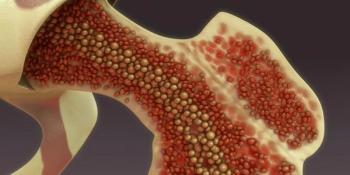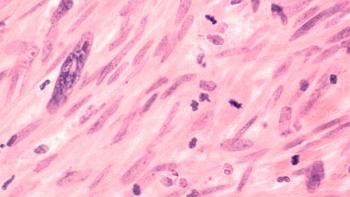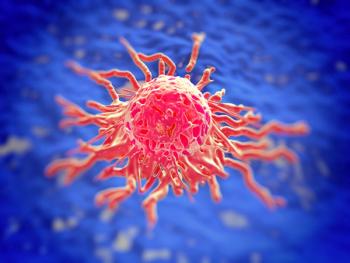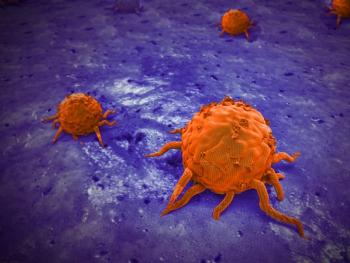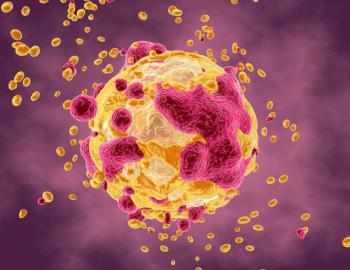
ECC: PICASSO 3 Trial for Metastatic Soft-Tissue Sarcoma Yields Disappointing Results
The combination of palifosfamide and doxorubicin was no better than doxorubicin and placebo in the phase III PICASSO 3 trial of patients with metastatic soft-tissue sarcoma.
[[{"type":"media","view_mode":"media_crop","fid":"17912","attributes":{"alt":"","class":"media-image","id":"media_crop_486389433632","media_crop_h":"0","media_crop_image_style":"-1","media_crop_instance":"1159","media_crop_rotate":"0","media_crop_scale_h":"0","media_crop_scale_w":"0","media_crop_w":"0","media_crop_x":"0","media_crop_y":"0","title":"Soft-tissue sarcoma photographed through an electron microscope.","typeof":"foaf:Image"}}]]The combination of palifosfamide and doxorubicin was no better than doxorubicin and placebo in the phase III PICASSO 3 trial of patients with metastatic soft-tissue sarcoma.
Palifosfamide is a bi-functional DNA alkylating agent with activity against multiple tumor types. It is the active metabolite of ifosfamide, and thus bypasses resistance pathways. The drug showed promising results in a
The new study included 447 patients with metastatic soft-tissue sarcoma treated at 113 centers around the world. Patients were randomized to either the study combination of palifosfamide 150 mg/m2 on days 1, 2, and 3 every 21 days for up to 6 cycles and doxorubicin 75 mg/m2 (226 patients) or doxorubicin and placebo (221 patients).
The median progression-free survival was 5.98 months for the study group compared with 5.23 months for the placebo group, for an HR of 0.87 (95% CI, 0.70-1.07; P = 0.18). Overall survival, a secondary endpoint, was also no different between the groups, at 15.91 months for the palifosfamide group and 16.89 months for the placebo patients (HR = 1.05, 95% CI, 0.79-1.39; P = 0.74).
The toxicities were similar across the two groups; 17.8% of patients in the palifosfamide group experienced febrile neutropenia, compared with only 9.8% for placebo patients. Other common adverse events included nausea, constipation, fatigue, and anemia, and grade 3 adverse events included neutropenia, febrile neutropenia, nausea, and several others.
Ziopharm, the company that sponsored the trial, has ceased development of palifosfamide for soft-tissue sarcoma based on these results, but the drug is still being tested for other indications including small-cell lung cancer in combination with carboplatin and etoposide.
Study Details
No crossover between the two study arms was allowed in PICASSO 3. Progression-free survival was evaluated based on RECIST v1.1 criteria by independent and blinded radiographic review. Six percent of patients had synovial disease; 34% had leiomyosarcoma, and the remaining 60% presented with other soft-tissue sarcomas. The patients were also stratified by age, and 26% of the total cohort were aged at least 65 years. Subgroup analyses of progression-free and overall survival are ongoing and were not presented at ECC.
Newsletter
Stay up to date on recent advances in the multidisciplinary approach to cancer.


